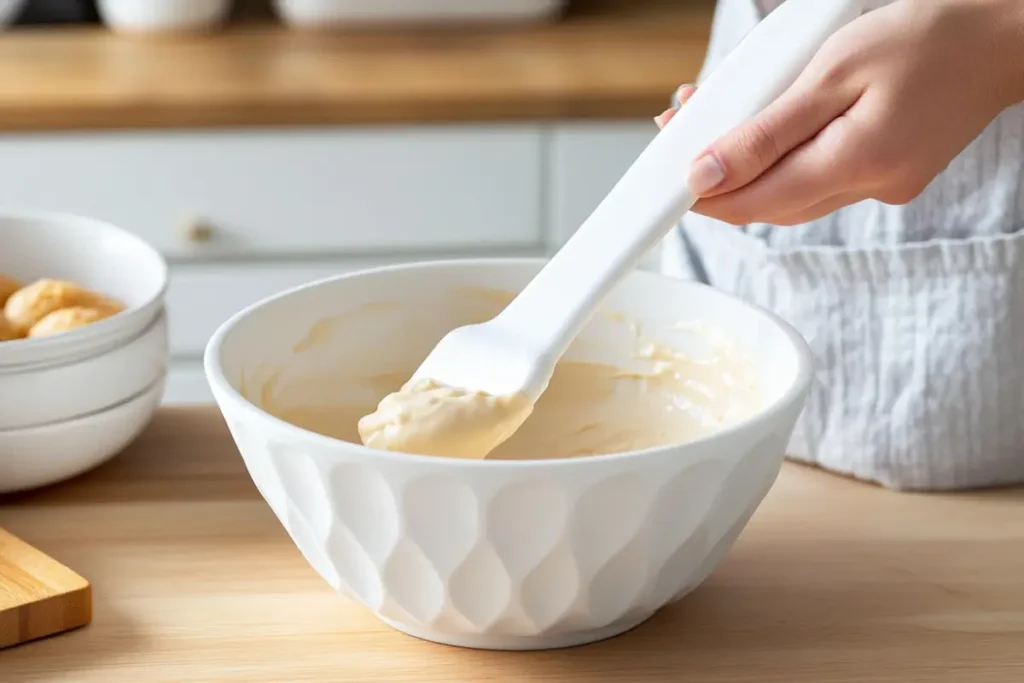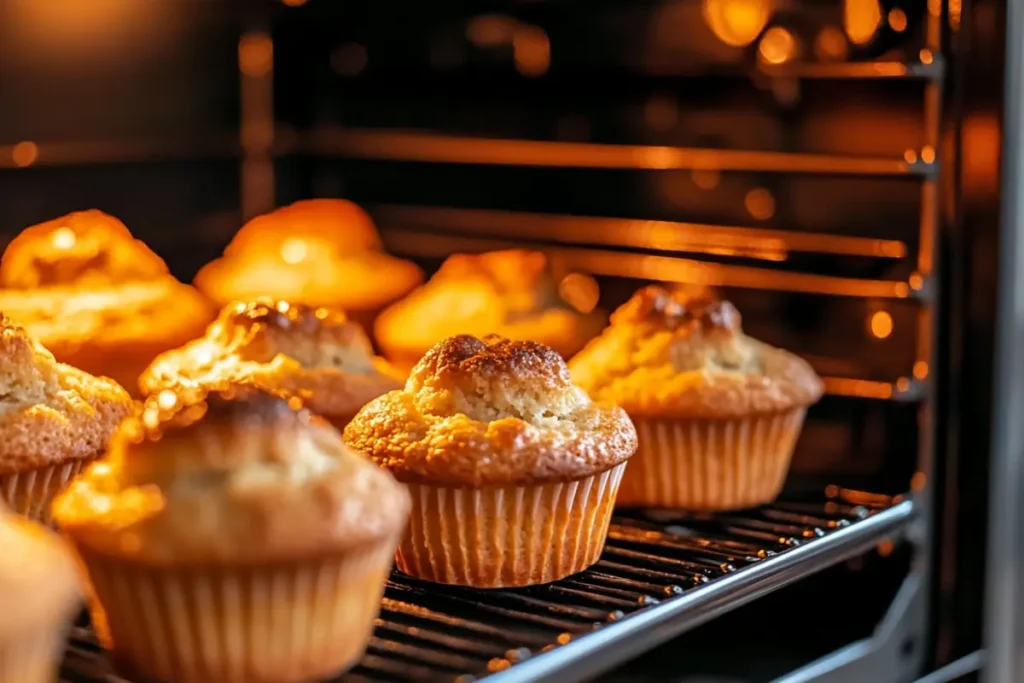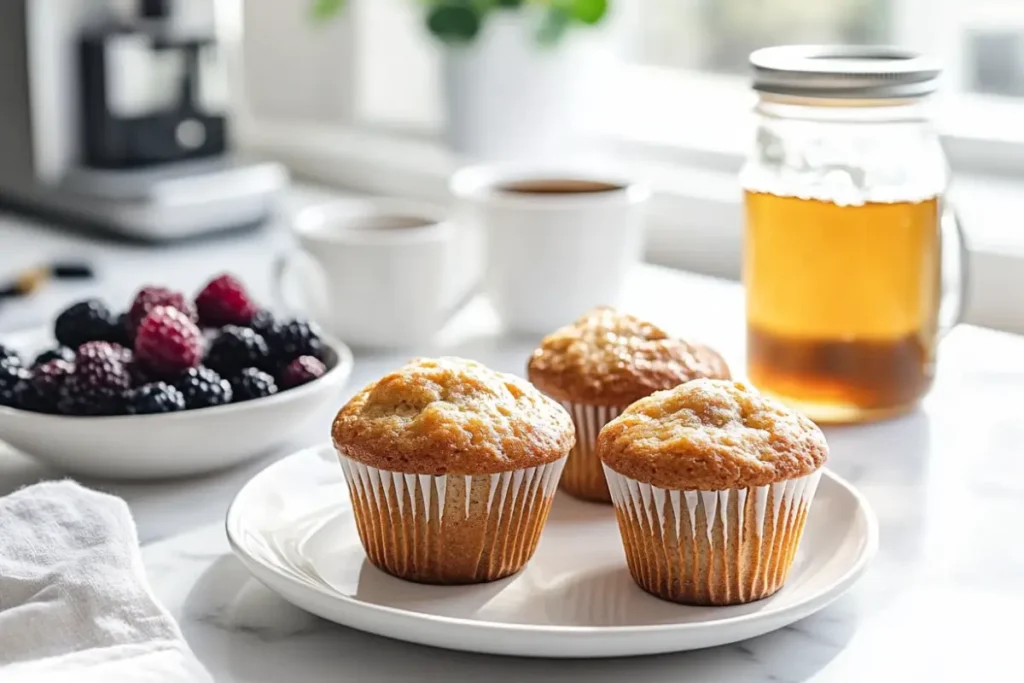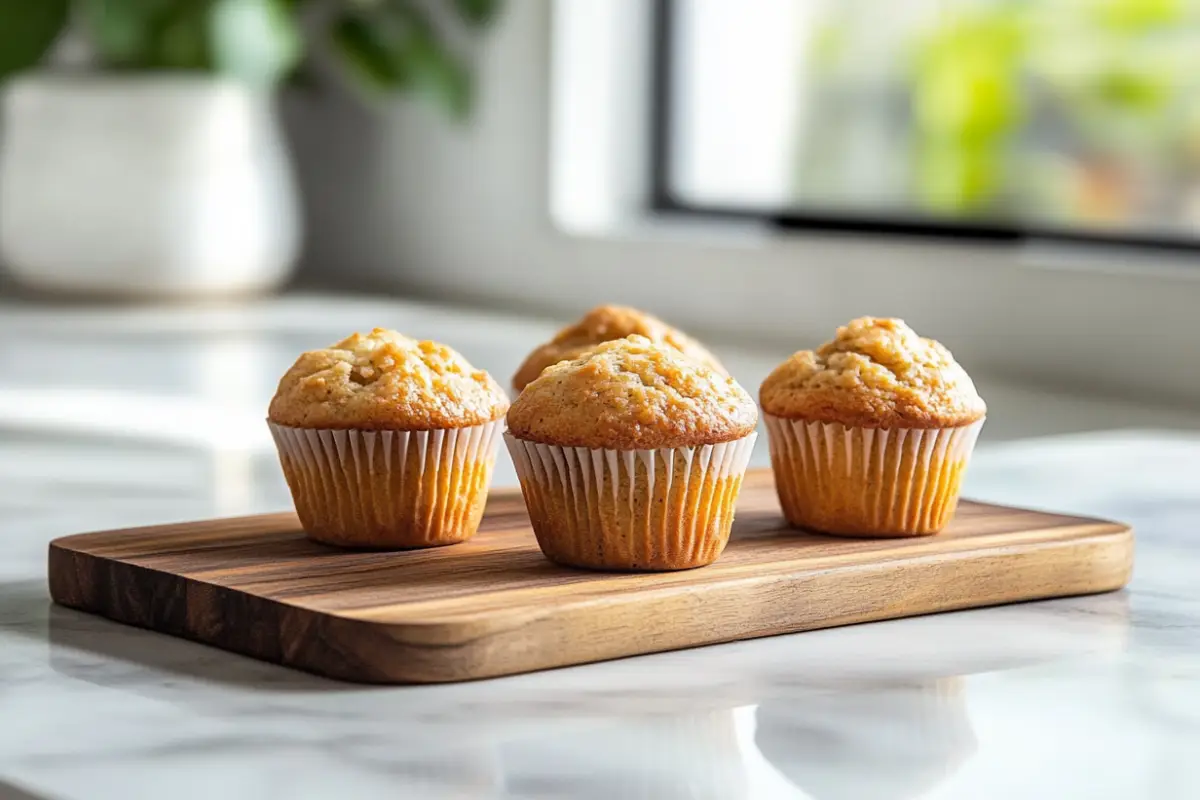Last Updated on March 7, 2025 by Simon
The secret to moist muffins lies in more than just following a recipe, it’s about mastering key techniques and choosing the right ingredients. There’s nothing quite like biting into a warm muffin that’s soft, tender, and full of flavor, but too often, homemade muffins turn out dry or crumbly. Thankfully, with a few simple adjustments, you can ensure your muffins are perfectly moist every time.
From using the right fats to preventing overmixing, the tips in this guide will help you unlock the secret to moist muffins and achieve bakery-quality results at home. Whether you’re baking for breakfast, a snack, or a dessert, these techniques will make all the difference in your baking success.
Table of contents
Unlocking the Science and Secret Behind Moist Muffins
The journey to perfect muffins isn’t just about following a recipe. It’s about understanding how each ingredient and technique impacts the final result. Here’s a breakdown of why some muffins turn out dry and how you can fix that with simple baking tips.
1. The Role of Fat in Moist Muffins
One of the primary secrets to moist muffins is the fat content. Fat adds moisture and richness to your baked goods, but not all fats work the same way.
Why Butter Isn’t Always the Best Option
While butter adds a rich flavor, it can lead to denser muffins. Why? Because butter solidifies at room temperature, which means muffins made with only butter tend to dry out faster.
The Solution:
- Use a combination of oil and butter for the best results.
- Vegetable oil or canola oil keeps muffins moist longer because it stays liquid at room temperature.
2. Don’t Overmix the Batter

Overmixing the batter is one of the most common mistakes that leads to dry muffins. When you overmix, you activate the gluten in the flour, which makes muffins dense and chewy.
How to Fix It:
- Combine the wet and dry ingredients gently.
- Fold the ingredients together until just combined. It’s okay if there are a few lumps in the batter!
3. Use the Right Liquids
Liquids play a crucial role in creating moist muffins. But not all liquids are created equal!
Better Than Milk: Use Buttermilk or Yogurt
Buttermilk and yogurt are more acidic than regular milk, and that acidity helps tenderize the flour, resulting in softer muffins.
Pro Tip:
- Replace regular milk with buttermilk or yogurt for a richer, moister texture.
- Applesauce or mashed bananas can also be used as liquid replacements for extra moisture.
4. The Importance of Sugar
Sugar doesn’t just add sweetness to your muffins, it also helps retain moisture. Reducing the sugar content too much can result in dry, crumbly muffins.
Natural Sweeteners to Try:
- Honey
- Maple syrup
- Mashed fruits (like bananas or apples)
Tip: If you’re looking to reduce sugar, balance it out by increasing the fat content or using moist fruits.
5. Bake at the Right Temperature, an Other Secret to Moist Muffins

Even if you’ve nailed the perfect batter, incorrect baking temperatures can ruin your muffins. Baking at too high a temperature causes the muffins to dry out, while too low a temperature can result in dense, undercooked muffins.
The Sweet Spot:
- Bake muffins at 350°F (175°C) for a consistent rise and tender crumb.
- Always preheat your oven to ensure even baking.
6. Use Fresh Ingredients
Fresh ingredients matter more than you think! Baking powder, baking soda, and flour all have expiration dates, and using outdated ingredients can affect your muffins’ rise and texture.
How to Check:
- Test baking powder by mixing it with hot water, it should fizz.
- Store flour in an airtight container to keep it fresh longer.
Common Mistakes That Make Muffins Dry
Here are a few mistakes to avoid if you want consistently moist muffins:
| Mistake | Why It Happens | How to Fix It |
|---|---|---|
| Overmixing the batter | Activates too much gluten | Mix until just combined |
| Baking too long | Dries out the muffins | Check muffins a few minutes before the timer ends |
| Using only butter | Butter solidifies, making muffins drier | Use a mix of butter and oil |
| Reducing sugar too much | Sugar retains moisture | Use natural sweeteners if reducing sugar |
Pro Tips for Perfect Muffins Every Time (Moist Secret)
#1: Measure Ingredients Correctly
Using too much flour is one of the biggest culprits for dry muffins. The right way to measure flour is by spooning it into the measuring cup and leveling it off with a knife.
Avoid scooping directly from the bag, as this compacts the flour, leading to dry batter.
#2: Rest the Batter Before Baking
Letting your muffin batter rest for 10-15 minutes before baking allows the flour to hydrate fully, which results in a softer texture.
#3: Add a Moisture Seal After Baking
To keep muffins moist for longer, brush them with a light syrup (like simple syrup) after they come out of the oven. This technique is often used by professional bakers to lock in moisture.
#4: Avoid Overfilling the Muffin Cups
Overfilling muffin cups can lead to muffins that bake unevenly and dry out. Fill each cup about ⅔ full to give the muffins room to rise without drying out.
Storage and Reheating Tips to Keep Muffins Moist
Even if you’ve baked the perfect moist muffins, improper storage can ruin their texture. Here’s how to store your muffins the right way to keep them soft and delicious for days.
1. Storing Muffins at Room Temperature
For short-term storage (up to 2-3 days), keep muffins at room temperature in an airtight container. Here’s a trick to retain moisture:
- Place a piece of paper towel at the bottom of the container to absorb any excess moisture.
- Add another piece of paper towel on top of the muffins before sealing the container.
This prevents condensation, which can cause muffins to become soggy.
2. Storing Muffins in the Refrigerator
While muffins can be stored in the fridge, it’s not ideal unless they contain perishable ingredients like cream cheese or fresh fruit. Refrigeration tends to dry out baked goods, so if you must refrigerate muffins:
- Wrap them in plastic wrap or foil to retain moisture.
- Place them in an airtight container to prevent them from absorbing odors from the fridge.
3. Freezing Muffins for Long-Term Storage here is the Moist Secret
Freezing muffins is the best way to keep them fresh for an extended period. Here’s how to do it:
- Step 1: Let the muffins cool completely.
- Step 2: Wrap each muffin individually in plastic wrap to prevent freezer burn.
- Step 3: Place the wrapped muffins in a freezer-safe bag or container.
When you’re ready to eat them, thaw the muffins at room temperature or reheat them in the oven or microwave using the methods mentioned earlier.
4. Reheating Muffins Without Losing Moisture
Reheating muffins can cause them to dry out if not done properly. Here are the best methods to maintain their moisture:
- Microwave method: Place a muffin on a plate, cover it with a damp paper towel, and microwave for 15-20 seconds.
- Oven method: Wrap muffins in foil and bake at 300°F (150°C) for 10-15 minutes.
Why Moist Muffins Matter

Moist muffins aren’t just about taste, they’re also about texture and freshness. Dry muffins feel stale and unappealing, while moist muffins are more enjoyable and last longer. By applying the secret to the moist muffins above, you can transform your homemade muffins into bakery-quality treats.
FAQs: Common Questions About Moist Muffins
The key to keeping muffins moist after baking is proper storage. Once muffins have cooled, store them in an airtight container to prevent them from drying out. Adding a piece of paper towel at the bottom and top of the container can help absorb excess moisture and keep the muffins from getting soggy.
If you want to retain the “fresh out of the oven” texture, wrap muffins individually in plastic wrap and store them in the freezer. Reheat in the microwave for 15-20 seconds to restore moisture.
For moist muffins, the batter should be somewhere in between thick and runny. It should be spoonable but not overly stiff. A batter that’s too thick can result in dry muffins, while a runny batter may lead to soggy muffins.
Tip: If your batter seems too thick, add a tablespoon of milk or buttermilk at a time to loosen it up. If it’s too runny, add a bit more flour.
Yes, you can revive dry muffins! Here’s how:
Brush them with simple syrup: A mixture of equal parts sugar and water, brushed over the tops of the muffins, will add moisture.
Steam them: Place the muffins in a steamer basket over boiling water for 1-2 minutes to soften them.
Reheat with a damp paper towel: This method works well if you’re in a hurry and need a quick fix.
Why Moist Muffins Are Worth the Effort
Achieving perfectly moist muffins may seem tricky at first, but by following the secrets and tips outlined in this article, you’ll never have to worry about dry, crumbly muffins again. From choosing the right ingredients to mastering the proper mixing and baking techniques, every step counts toward creating bakery-style muffins at home.
Moist muffins are more than just a tasty treat, they’re versatile, satisfying, and perfect for any time of day. Whether you’re serving them warm with butter, pairing them with yogurt and fruit, or transforming leftovers into a creative new dish, moist muffins always deliver comfort and joy.
Now that you know the secret to moist muffins, it’s time to put these tips into practice. Ready to bake something healthy and delicious? Check out our article on Easy GAPS Raisin Muffins Recipe: Perfect for Your Diet Plan for a wholesome muffin recipe that fits into your diet and lifestyle. It’s the perfect way to apply what you’ve learned here! Happy baking!

